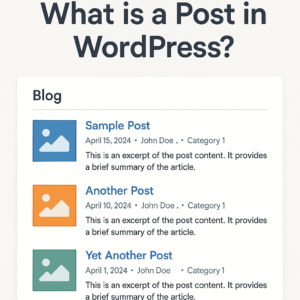In WordPress, a post is a type of content designed for publishing dynamic, time-sensitive information such as blog entries, news updates, articles, or announcements. Posts are typically displayed in reverse chronological order, meaning the latest post appears first on your blog or homepage. They are essential for websites that are content-driven and regularly updated.
Posts are organized using categories and tags. Categories allow you to group related posts together, making it easier for readers to navigate your content. Tags offer a more detailed way of describing the topics covered in each post. This organizational structure improves both user experience and search engine optimization (SEO).
A key feature of posts is their timestamp. Each post is associated with a specific publication date and time, which is important for readers who follow your site for the latest information. Posts can also be set to allow comments, encouraging engagement and discussion from your audience.
Posts appear in WordPress RSS feeds, allowing readers to subscribe and receive updates automatically. They are a great way to keep your website active and to provide regular, fresh content that can attract and retain visitors.
In contrast to pages in WordPress (like “About Us” or “Contact” pages, which are static and timeless), posts are designed to be fluid and continuously updated. They are ideal for blogs, news sites, educational resources, and any platform that benefits from a steady stream of new content.
In summary, WordPress posts are a fundamental tool for creating dynamic, organized, and interactive content on your website. By consistently publishing high-quality posts, you can grow your site’s audience, improve SEO, and establish your authority in your niche.




